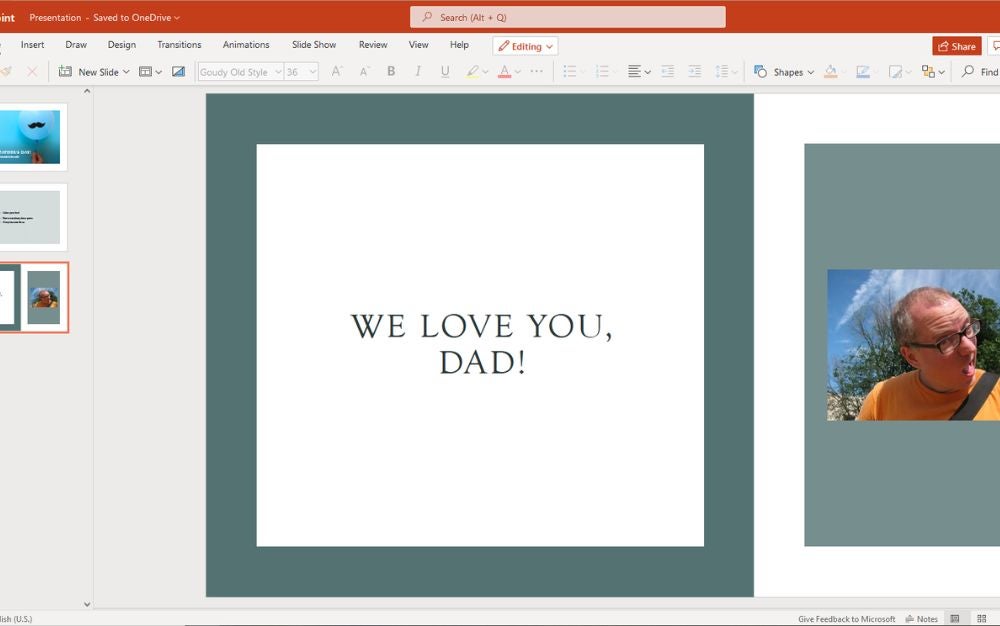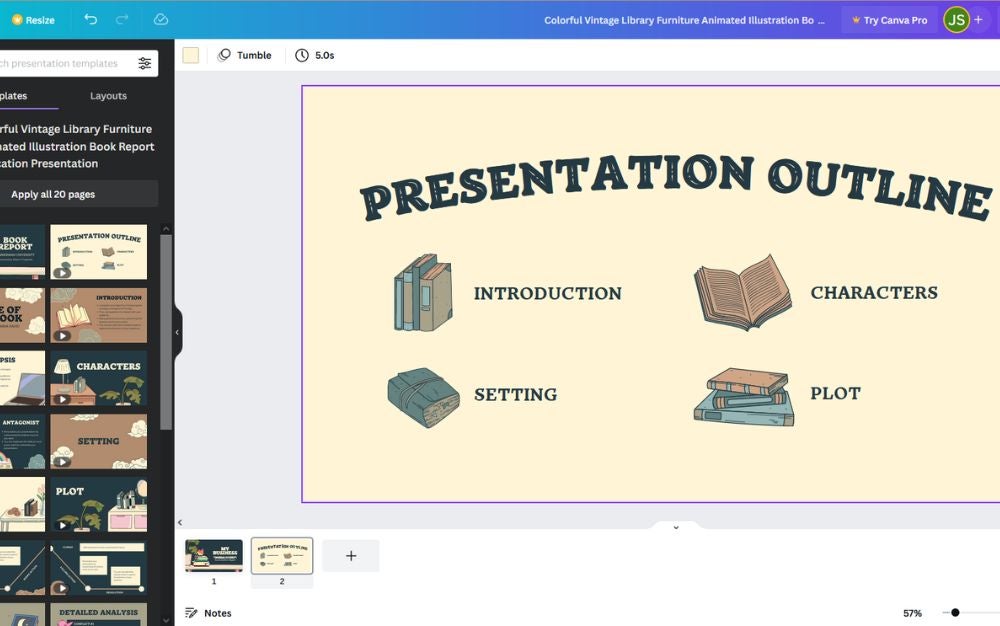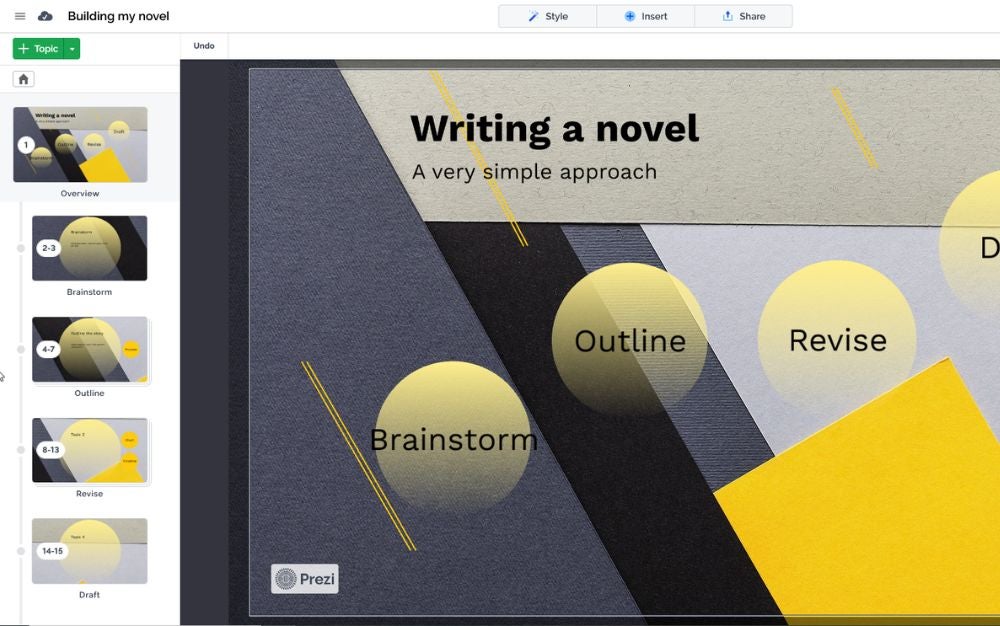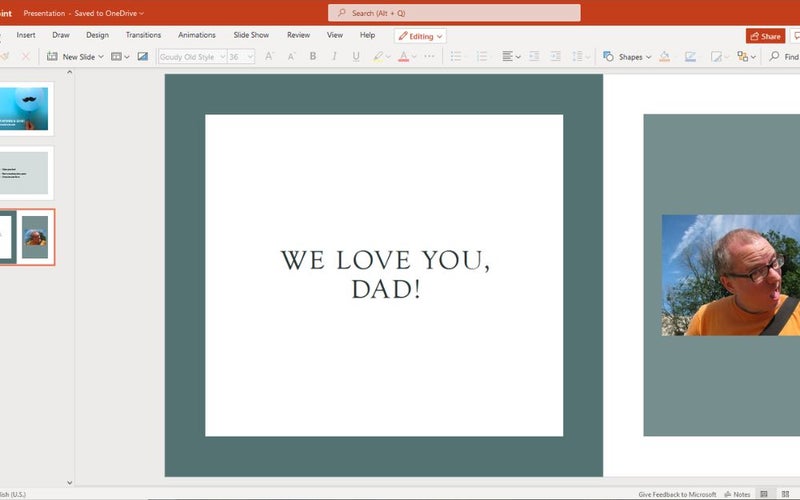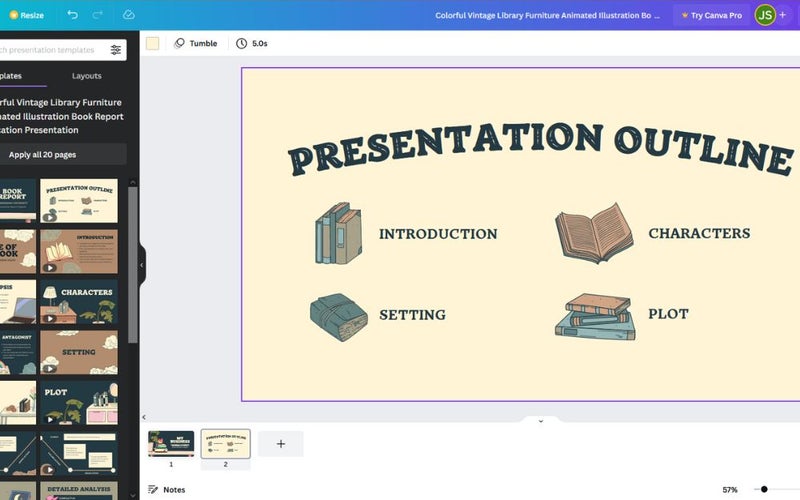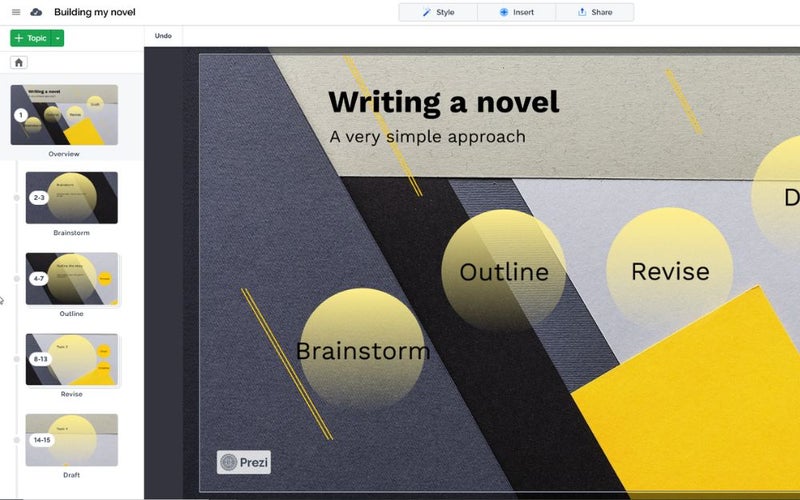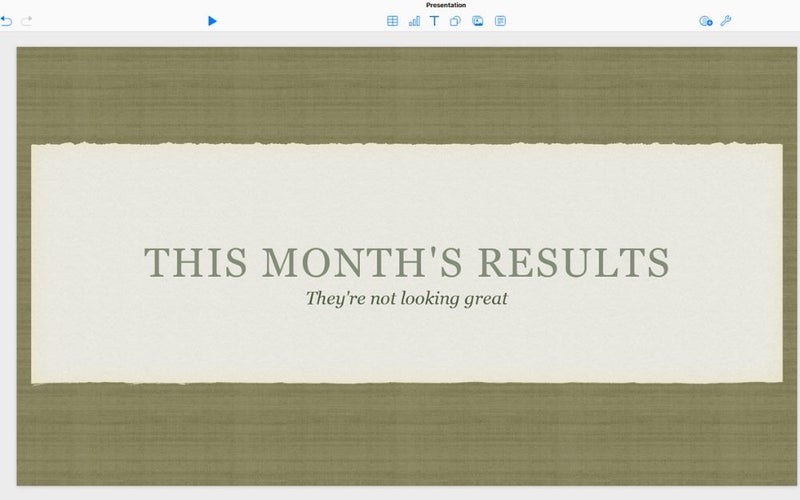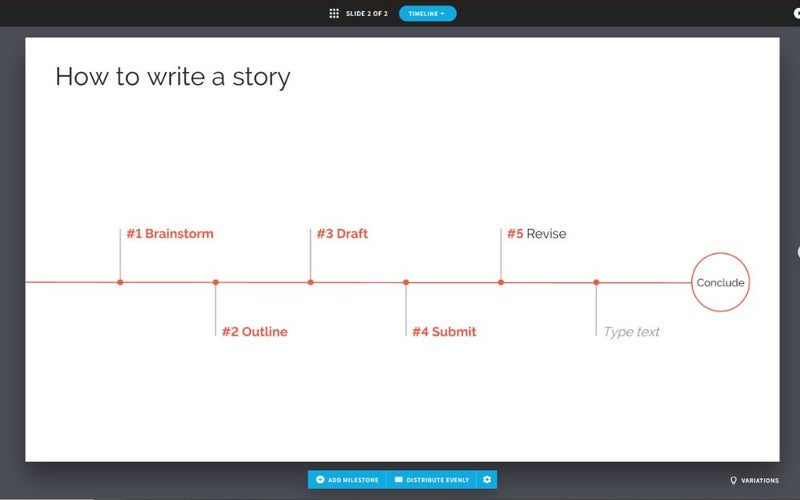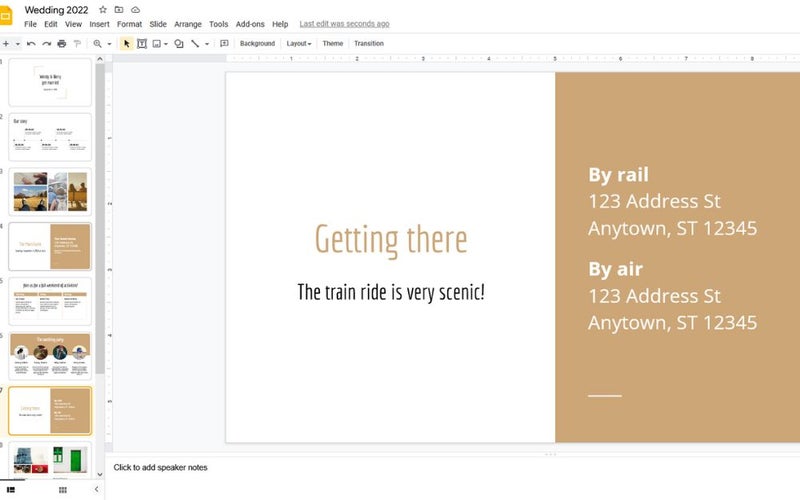We may earn revenue from the products available on this page and participate in affiliate programs. Learn more ›
Whether you’re a student or a working professional, everybody has to make presentations from time to time and that usually involves presentation software. But when you’re frantically Googling around to refresh your PowerPoint knowledge, it’s only natural to wonder what is really the best presentation software out there. Yes, everybody knows that Microsoft’s the biggest player in the slideshow game but there are actually a lot of alternatives to explore. If you expand your horizons, you may find another app that makes more sense for you. Expand your office app horizons and see how the best presentation software can make your job a little easier.
- Best overall: Microsoft PowerPoint
- Best for professionals: Canva
- Best for Zoom: Prezi
- Best for Mac: Apple Keynote
- Best for students: Beautiful.ai
- Best budget: Google Slides
How we chose the best presentation software
As a journalist with over a decade of experience, I know how to present information to all sorts of audiences effectively and efficiently. Over the years, I’ve worked with a variety of clients to craft copy for presentations, as well as the slideshows themselves. I’ve used the best software in the business, as well as quite a lot of the bad stuff, so I know what will work for you and your needs.
In making this list, I relied on my own firsthand experience with presentation software, as well as consulting professional tutorials and critical reviews. I also personally created a number of sample slideshows using prebuilt templates and custom layouts of my own in order to put the programs through their paces. I used both the stalwart software suites that everyone knows, as well as a number of lesser-known alternatives that have emerged over the past few years. If an impressive new program hits the block, we will update this list accordingly once we get some hands-on time with it.
Things to consider when buying presentation software
There has been an explosion of presentation software over the past few years, and each of the program’s developers has their own pitch to lure people away from PowerPoint. The most important things to consider when choosing presentation software will vary from person to person. A small business owner putting together a professional presentation with original branding may need different tools to make an appealing pitch, versus a student building a last-minute slideshow for a group project to present the results of their research in Econ class.
There are a wide variety of bells and whistles that presentation building programs boast as their killer features, including brand kit integration, easy social media sharing options, offline access, seamless collaboration, AI suggestions, and analytics. These extra features will seem very helpful to enterprise customers, but the average person should realistically prioritize more traditional factors like ease-of-use, customizability, and cost. There are, however, a few elements that every single person who uses presentation software needs, so let’s walk through the fundamentals.
Ease of use
No one wants to spend hours learning how to make a basic slideshow. While all of these programs take time to master, some of them are easier to pick up quickly than others. An intuitive piece of software grabs your attention and allows you to perform basic actions like adding slides and assets without time-consuming tutorials. The more professional-grade programs out there might take a little more time to master, but they’re rarely difficult to use.
Prebuilt templates
The number one thing that you want from a presentation software is a good-looking final product, and templates help you achieve that goal quickly and easily. All of the competitive presentation software suites out there have a library of pre-built templates that let you plug in information quickly. Quality and quantity separate the good programs from the great ones, though. Some apps have more templates than others, and some templates look better than others. On top of that, some programs lock their best templates behind a premium subscription, which leaves you relying on the same basic structures over and over.
The truly professional-grade software also includes a selection of prebuilt art assets to help you bring a personal touch to the presentation. If a program doesn’t have an impressive set of templates, it isn’t worth using.
Customizability
While most people want to start building their presentations with a template, you need to change some things around if you want to keep things looking fresh. Professionals, in particular, will probably want to customize every aspect of their slideshows, from the color of the background to the exact pixel position of images. This obviously increases the amount of time it takes to craft a presentation, so it’s important that the systems for making those tweaks are intuitive and easy to use. Not every user is going to need the level of customizability, but it’s definitely something worth considering.
Who’s it for?
Every presenter needs to build a slideshow for their audience. They should probably ask that question when they pick which presentation software to use as well, as it can help determine what software they should use. Students might need the expansive collaboration tools of certain platforms but might not need the pinpoint design controls in others. While the presentation software listed below can all make a great slideshow with enough time and effort, your own use case and the intended audience will have a big impact on your choice.
Cost & affordability
Very few presentation builders have a simple, one-time price tag. Most operate on a subscription model, where you can buy a month’s use for a certain amount, or save money by buying a year at a time. A few are free, though many appear to only offer a free trial or stripped-down version that will allow you to put together something basic before quite literally buying in.
If you’re looking to build just one or two presentations a year, it’s probably best to stick to one of the free options. However, if you have to build slideshows on a regular basis, it’s probably worth sinking your money into a subscription to the program you really like.
Generally speaking, as you might expect, the more impressive and in-depth software costs more than the more traditional fare. However, because many of the most popular programs in the space (such as Microsoft PowerPoint) come as part of a suite, you will need to weigh the benefits of not only the presentation software but also the other programs that come along with it. If you’re a die-hard Microsoft Word user, for example, you’re already paying for the Microsoft Office suite, but the calculus gets more complicated if you prefer Google Docs.
The best presentation software: Reviews & Recommendations
By now, you probably have a good idea of what you should be looking for in presentation software, so now we’ll get into the interesting part. As mentioned above, we’ve broken down our picks based on a few common use cases, as well as the criteria we mentioned above. Regardless of which one you decide on, all of these programs are powerful tools that can produce a slick slideshow with a little time and effort, and you’d be well served by any of them.
Best overall: Microsoft PowerPoint
MobiSystems
Why it made the cut: Whether you’re a broke student or a busy professional, Microsoft PowerPoint can do whatever you need. It’s also reasonably priced.
Specs
- Platforms: Windows, macOS, iOS, Android, Web
- Suite or standalone: Microsoft Office 365 Suite
- Special features: Designer, MS Office integration
- Free version: Yes
Pros
- Well-known interface imitated by competitors
- Powerful and accessible
- Good templates
- Part of a popular software suite
Cons
- Slight learning curve
Even after testing more than a dozen programs, Microsoft PowerPoint remains the go-to presentation software for most people. Setting the industry standard, it offers great templates, an accessible interface, an impressive library of prebuilt art assets, and plenty of tools for building a slick slideshow. It also supports real-time collaboration, offline editing, and third-party content embedding. At $70 a year, PowerPoint is significantly cheaper than most of its competitors and it’s part of Microsoft Office, a software suite that most companies pay for and workers can’t live without.
Of course, it isn’t perfect. PowerPoint makes it very easy to make a basic presentation, but it will likely take you longer to make something that looks polished and professional in PowerPoint than with design-forward programs like Canva or Prezi. Even top-flight presentations are achievable, though, in a reasonable timeframe. PowerPoint might not be the best presentation program for every situation, but it’s certainly the best for the average person.
Best for professionals: Canva
Canva
Why it made the cut: Canva creates beautiful, professional-grade presentations faster than its rivals, and it’s easier to use than most.
Specs
- Platforms: Web, Windows, iOS, Android
- Suite or standalone: Standalone
- Special features: Amazing templates, very customizable
- Free version: Yes
Pros
- Excellent free version
- Extremely easy to use
- Makes beautiful presentations fast
- Eye-catching templates
Cons
- Harder-to-use advanced features
- Limited offline use
If you need to make a striking business presentation in an hour, Canva is absolutely the software for you. Designed from the ground up for business professionals who don’t want to have to use another program (i.e., Photoshop or GIMP) to create visually compelling content, Canva delivers on this promise in spades.
Canva’s gorgeous templates are the best of any of the programs we tested, and its free version is far more robust than you’d expect for a costless trial. Unlike many of these other programs, it creates virtually any marketing material you can imagine, including videos, logos, social media posts, and even resumes. It also includes splashy features that most people won’t use, like brand kit support and easy sharing to social media.
Canva’s simplicity has drawbacks, too, though. It can be a bit difficult to get it to make complicated charts, tables, or diagrams, and it lacks the familiar (but clunky) customizability of PowerPoint. However, if you’re looking to make the most beautiful presentation you can, Canva is a great choice for your business.
Best for Zoom: Prezi
Prezi
Why it made the cut: Prezi is a strong program that structures its basic features in a completely different manner than its competitors. It also has very good Zoom integration.
Specs
- Platforms: Web
- Suite or standalone: Standalone
- Special features: Zoom integration, unique structure
- Free version: No (Two-week free trial)
Pros
- More creative structure than competitors
- Intuitive interface
- Expansive feature set
Cons
- Doesn’t work for everyone
- Must pay more for advanced features
If you’re really tired of the straight-line structure mandated by other presentation software, Prezi gives you a little more freedom to build things your way. Prezi uses a topic-oriented form that allows you to easily string your ideas in an order that makes sense to you. The basic idea behind Prezi is that you create bubbles of individual content, and then you thread a path through those ideas to create a presentation with a physical form that’s more enticing and conversational than just a linear succession of slides.
While this unique approach makes Prezi a worthy alternative on its own, the app also boasts plenty of specialized features you’d want in a premium program, including a large asset library, social media integration, and collaboration support.
Though any presentation software can work with Zoom via the screen-share function, Prezi features a very useful video call-focused mode, Prezi Video, which allows you to build a presentation as an overlay that appears in your Zoom window so people can see you and your slides.
Prezi’s freeform structure isn’t going to work for everyone, but if Powerpoint feels stifling, it might open new doors for you.
Best for Mac: Keynote
Apple
Why it made the cut: Apple’s answer to PowerPoint might not be as popular as its competitor, but it’s still pretty powerful in its own right.
Specs
- Platforms: macOS, iOS, Web
- Suite or Standalone: Apple Software Suite
- Special features: iCloud support, multiple formats
- Free version: Yes (with an Apple account)
Pros
- Familiar to most Mac users
- Better asset library than most
- No-frills feature set
Cons
- Lacks unique selling points
If you’re a Mac user, you’ve probably at least considered using Keynote to put a presentation together. While all of the other programs on this list work on a Mac as web apps, Keynote is the only app made specifically for the platform.
Like PowerPoint, Keynote is a wide-reaching program designed to help anyone make a sharp-looking presentation, from students to professionals. It has a more robust feature set than other PowerPoint competitors–including better default templates, a bigger asset library, and desktop support. It doesn’t quite have the versatility of enterprise-facing apps like Canva, but you can put together a great-looking slideshow for school or a recurring meeting.
On the other hand, it can be a little tricky to pick up: The interface isn’t quite as intuitive as Google Slides, which is also free. If you have access to both, you get a choice: Build a more striking presentation in Keynote, or put something together quickly in Slides.
Best for students: Beautiful.ai
Beautiful.ai
Why it made the cut: Beautiful.ai’s AI-powered presentations allow you to make a sharp slideshow in no time flat, and its generous free trial gives time to try it out.
Specs
- Platforms: Web
- Suite or standalone: Standalone
- Special features: AI integration
- Free version: No (Two-week free trial)
Pros
- Clean interface
- Modern features
- Simple and effective
Cons
- Expensive for what it is
- Limited assets and templates
Looking to build a clean, modern presentation in as little time as possible? Beautiful.ai uses AI to help you build a visually stunning presentation in no time flat. While it’s less of a household name than our other picks, it’s the choice of many tech companies for its uncluttered interface, eye-catching templates, and overall no-fuss approach.
Compared to PowerPoint or Canva, Beautiful.ai does not have a rich feature set or an infinite variety of template options. What the content library lacks in volume, it makes up for in style, though. Its appealing, elegant content elements lend themselves to clean, modern presentations. More importantly, the program’s AI assistant knows how to use those assets. It automatically tailors your slideshow’s design to fit the information you want to present, so you’ll wind up with something thoughtfully prepared before you know it.
Best budget: Google Slides
Why it made the cut: Google Slides is not only an excellent presentation program—it’s also one of the only ones actually free with no strings attached.
Specs
- Platforms: Web, iOS, Android
- Suite or standalone: Google Workspace
- Special features: Easy collaboration, Google integration
- Free version: Yes
Pros
- Free for anyone with a Google account
- Familiar interface
- Easy to share and collaborate
- Decent templates
Cons
- Somewhat basic in functionality
- Clunky for some users
When it comes to software, there’s “free to use,” and then there’s free. Most of the software on this list offers either a restricted free mode or a time-limited trial. Google Slides is actually free, fully free, for another with a Google account. And it holds its own, even compared to its premium competitors.
Google Slides feels like a simplified version of PowerPoint. It’s a little easier to learn the basics, but also offers fewer templates, screen transitions, and content. It also lacks a built-in asset library to fill dead space, though the program’s Google Drive integration makes it easy to add your own. Like most Google programs, it also supports add-ons that give it enhanced features, like the ability to solve equations within the slideshow.
If you’re looking to make an extremely sharp presentation, Google Slides will take a bit more effort than most. If you need to make a basic slideshow and you grew up on earlier versions of PowerPoint, you’ll feel right at home using Slides.
FAQs
Q: What are the three most popular presentation software options?
Based on our research, the three most popular programs are Microsoft PowerPoint, Google Slides, and Keynote, roughly in that order. PowerPoint is far more popular than the other two, though. All three are good options, depending on what you’re looking for. All things being equal, though, we recommend PowerPoint.
Q: How much does presentation software cost?
Generally, most of the programs listed here cost between $7 and $15 a month for their premium packages. However, Google Slides and Keynote are free, so we recommend those for customers on a budget.
Q: Is Canva better than PowerPoint?
Canva and PowerPoint are both great programs that offer about equal value. It’s much easier to create a beautiful, eye-catching presentation in Canva, but PowerPoint’s advanced features give you more options. If you need to make slick-looking professional presentations on a frequent basis, we recommend Canva for its superior ease-of-use.
Q: Does Adobe have presentation software?
Adobe had its own competitor to PowerPoint, Adobe Presenter. The company recently ended support for Presenter on June 1, 2022.
Final thoughts on the best presentation software
While everyone wants to use the best program for the job, the truth is that all presentation builders have a lot in common with each other. If you’re familiar with one, it often makes sense to stay put. Despite all the similarities, it can take some time to learn a new system. If you’re constrained and frustrated, or are using presentation software for the first time, you should consider a wide range of options beyond PowerPoint.
Though alternatives like Beautiful.ai, Canva, or (especially) Prezi cost a bit more, they each have strong features that may work better for your purposes. That said, sometimes the most popular presentation software options are the best. If you don’t have specific expectations or need to clear a high bar for design, PowerPoint and free options like Google Slides should work well, and have the benefit of wide adoption in corporate workplaces.

